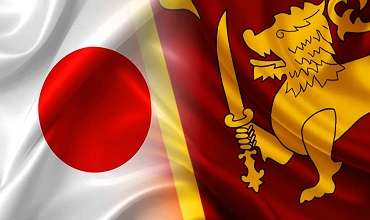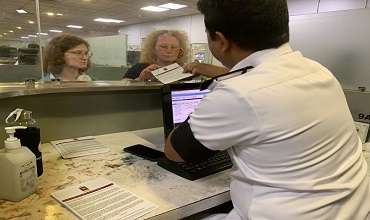SL Central Bank once again urges exporters to convert dollar earnings
Sri Lanka’s Central Bank on Monday, once again raised concerns that exporters were not converting their US dollar earnings putting pressure on foreign exchange reserves which has impacted adversely on foreign exchange needed for imports.
In a statement, the Central Bank said recent developments in the foreign exchange market have raised several concerns, particularly as some of the typical avenues of foreign exchange inflows have been affected due to pandemic-related pressures, as explained below: Compared to the monthly average exports as reported by Customs (goods flow) of US$985 million during the eight months ending August 2021, the monthly average repatriation of export proceeds during July/August 2021 has been $640 million as reported by banks (financial flow). Accordingly, there has been a significant gap of $345 million between these two figures.
The statement implied that the Central Bank would take steps to rectify this imbalance and ensure proper conversion of export proceeds.
The full statement of the Central Bank is as follows:
“Sri Lanka’s merchandise export sector has shown a notable improvement in 2021 compared to the pandemic-affected 2020. As per the latest Customs data, export earnings have averaged $985 million during the eight months ending August 2021 compared to a monthly average of $837 million in 2020, while the average earnings have amounted to $1,064 million during June-August 2021.
This is an appreciable development as the merchandise export sector (comprising diverse products) is the largest foreign exchange earner in most countries, including Sri Lanka. Sri Lanka has had a trade deficit each year since 1977, and the gap between merchandise imports and exports is typically financed by other inflows to the external current account (such as tourism and other services inflows as well as workers’ remittances), and financial inflows (such as investments and borrowing).
In this background, some recent developments in the foreign exchange market have raised several concerns, particularly as some of these typical avenues of foreign exchange inflows have been affected due to pandemic-related pressures, as explained: Compared to the monthly average exports as reported by Customs (goods flow) of $985 million during the eight months ending August 2021, the monthly average repatriation of export proceeds during July/August 2021 has been $640 million as reported by banks (financial flow). Accordingly, there has been a significant gap of $345 million between these two figures.
This observation therefore, raises the serious question as to whether exporters comply with the regulation on 100 per cent repatriation of export proceeds. b) It also appears that due to an undue speculation on exchange rate movements, there has been a reluctance to convert export earnings during the period from January 2020 to July 2021, thereby limiting inflows to the domestic foreign exchange market, which situation has then resulted in a buildup of foreign currency deposit balances with the banking sector by a significant $1.9 billion.
In addition, with low rupee interest rates, some exporters have found it more lucrative to borrow and import to meet their input requirements, leading to further tension in the domestic market. As per the data available, it would also be noted that if there had been a 100 per cent repatriation and 100 per cent conversion of export proceeds, the monthly export foreign exchange flow into the domestic market would have been $985 million, and with the average expenditure on imports of $1,670 million, that would have resulted in a monthly average gap of $685 million.
This could have been easily financed using other foreign exchange inflows into the country. Based on the above past statistics in general, and the experience during July/August 2021 in particular, the monthly average gap between the conversions of export proceeds with an incomplete repatriation and expenditure on imports has been quite alarming.
It would also be fair to state that there is a necessity for a country to ensure that the foreign exchange generated through export activities are duly repatriated into the country and converted into its currency.
In fact, many emerging market economies have repatriation and conversion requirements imposed on merchandise and services exports. Country experiences vary, and over time, with the buildup of a country’s foreign exchange reserves through such non-debt inflows, countries have also gradually relaxed these requirements.
Regional economies such as Bangladesh, India, Indonesia, Malaysia, Nepal, Pakistan, and Thailand have export proceeds repatriation requirements currently in place varying from 3 months to 2 years of the export. Bangladesh, India, Pakistan and Thailand have repatriation requirements on both goods and services export proceeds, while in Nepal, Malaysia and Indonesia, the repatriation requirement is only applicable on goods exports.
Bangladesh, India, Pakistan and Thailand have rules on conversion to respective local currencies in different percentages based on nature and the amount of repatriated export proceeds 3 and their utilisation.
Such repatriation and conversion requirements ensure the fulfillment of the demand for foreign currency, including intermediate and investment goods imports directly required by the export sector, as well as essential fuel and medical requirements of the country, which are indirect inputs to all sectors including the export sector.
Therefore, it would be reasonable for the Government (which supports the export sector through lower taxes and numerous other incentives) and the Central Bank (which is expected to deliver price and economic stability as well as financial system stability) to take steps to ensure the complete repatriation of export proceeds within a reasonable period and the conversion of inflows of export proceeds into the local currency, including the proceeds already accumulated in exporters’ accounts, so that the true purpose of exports is realised.
As would be well appreciated, an export would realise its objective only when it finally culminates in the flow of foreign exchange that is generated by the export into the country’s financial system in its local currency.
That objective would obviously not be fulfilled if the final conversion of export proceeds into local currency does not take place. Accordingly, steps must be taken to strengthen the systems to ensure monitoring and to implement measures that lead to this objective. It is only then that the gap between the foreign exchange liquidity provided through exports and the foreign exchange liquidity demand for imports would reduce to the level as published in the Central Bank’s own reports.”
-
Still No Comments Posted.













Leave Comments